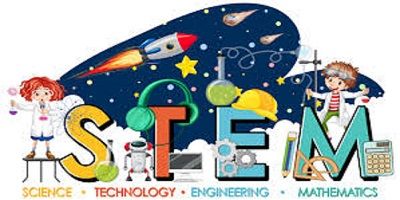STEM Education
STEM Education stands for Science, Technology, Engineering, and Mathematics education. It is an interdisciplinary approach to teaching and learning that integrates these four subject areas in a cohesive manner. STEM edu aims to foster critical thinking, problem-solving skills, creativity, and innovation in students by applying concepts from these disciplines to real-world situations. Here’s a breakdown of the key components of STEM edu and its benefits:
Components of STEM Education:
- Science: This component involves the study of the natural world and its phenomena. Students explore scientific concepts, conduct experiments, and learn to use the scientific method to investigate and understand various aspects of the world around them.
- Technology: Technology encompasses the tools, machines, and systems created by humans to solve problems and improve their lives. In STEM edu, students learn how to use technology effectively and may also engage in coding and programming activities.
- Engineering: Engineering involves the design, creation, and optimization of systems, structures, and processes. Students are encouraged to think like engineers, solve engineering challenges, and design solutions to real-world problems.
- Mathematics: Mathematics serves as the foundation for many scientific and engineering concepts. Students develop mathematical skills and understanding, which are essential for analyzing data, making predictions, and solving complex problems.
Benefits of STEM Education:
- Promotes Critical Thinking: STEM education encourages students to think critically and analytically. They learn how to ask questions, gather evidence, and make informed decisions, which are valuable skills in any field.
- Fosters Problem Solving: STEM edu teaches problem-solving skills, which are applicable to a wide range of real-world challenges. Students learn to approach problems systematically and develop creative solutions.
- Prepares for Future Careers: STEM-related fields are some of the fastest-growing job sectors globally. STEM education equips students with the knowledge and skills needed for careers in science, technology, engineering, and mathematics.
- Encourages Innovation: STEM edu nurtures creativity and innovation. Students are encouraged to explore new ideas, design novel solutions, and invent technologies that can address societal issues.
- Promotes Collaboration: Many STEM projects involve teamwork, mirroring the collaborative nature of real-world STEM careers. Students learn to work together, share ideas, and leverage each other’s strengths.
More Benefits…
- Improves Technological Literacy: In an increasingly technology-driven world, STEM edu helps students become more technologically literate. They learn to use and adapt to new technologies effectively.
- Addresses Global Challenges: STEM education empowers students to tackle pressing global issues, such as climate change, healthcare, and sustainable energy, by applying scientific and engineering principles.
- Enhances Math Skills: Strong math skills are a key outcome of STEM edu. These skills are not only valuable in STEM careers but also in everyday life.
- Promotes Inclusivity: STEM education initiatives often focus on increasing diversity and inclusivity in these fields, helping to bridge gender and racial gaps in STEM professions.
- Prepares for a Changing World: STEM education equips students with the adaptability and resilience needed to thrive in a rapidly changing world, where technology and science continue to evolve.
Overall, STEM Education plays a crucial role in preparing students for the challenges and opportunities of the 21st century, whether they pursue STEM careers or simply become informed, critical thinkers capable of addressing complex issues.
